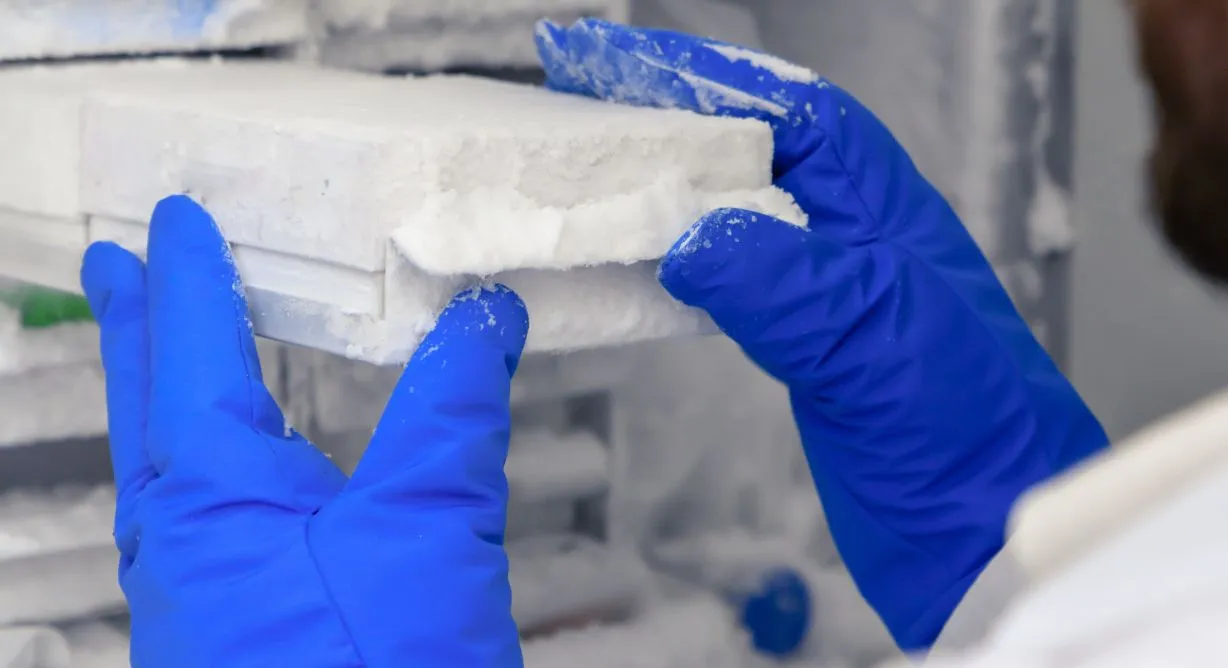Asbestos has long been a known hazard in many older buildings, but there’s another hidden threat that is just as dangerous: asbestlint. This insidious, microscopic form of asbestos can float in the air, completely undetected, causing severe health problems without anyone realizing it. It’s an invisible danger that can slowly invade your home or workplace, posing risks to your health over time. Understanding asbestlint, its risks, and how to prevent exposure is essential for keeping yourself and your loved ones safe.
Whether you live in an older house, work in an older building, or are involved in a renovation project, being informed about asbestlint is crucial. In this article, we will explore what asbestlint is, where it can be found, how it can affect your health, and what steps you should take to avoid exposure. With the right knowledge, you can make better decisions that safeguard your well-being.
What Is Asbestlint? Understanding the Threat
When people think of asbestos, they often envision solid materials like insulation or tiles. However, there’s a much subtler form of asbestos called asbestlint that can be just as dangerous. These tiny, airborne fibers are released when asbestos-containing materials break down or get disturbed. Asbestlint is often invisible, making it easy to overlook the danger it poses. Despite its innocuous appearance—similar to dust or lint—it’s important to understand that these microscopic particles are one of the most significant health threats in older buildings.
Unlike bonded asbestos, which is solidly embedded in materials like insulation, flooring, and ceiling tiles, asbestlint is free-floating and can spread quickly through air currents. The most troubling aspect of asbestlint is its ability to go undetected for years, lurking in the background and gradually causing serious health issues. It is only through careful inspection and awareness that we can detect and prevent exposure to this hidden menace.
Asbestos fibers, when they degrade, become asbestlint. These tiny particles are easily inhaled, and once they enter the lungs, they can stay there for years, causing severe health complications down the line. Because these fibers are so small, they can remain airborne for long periods and travel through ventilation systems, meaning you could be exposed without even knowing it.
Where Is Asbestlint Found? Common Areas of Exposure
Knowing where asbestlint can be found is the first step in preventing exposure. Asbestlint is typically found in older buildings—especially those constructed before the 1980s—because asbestos was widely used in building materials until that time. The risk of encountering asbestlint is particularly high in areas where asbestos-containing materials were commonly used, such as in insulation, ceilings, flooring, and even appliances.
Older homes, commercial buildings, and public buildings are more likely to contain asbestos because of the materials used during their construction. Asbestlint can be found in the following areas:
- Ceiling Tiles and Walls: Many older ceiling tiles and wall panels contain asbestos. If these materials are damaged or deteriorating, they may release asbestlint into the air.
- Insulation: One of the most common places to find asbestos is in insulation materials, particularly around pipes, walls, and attics. If insulation materials begin to break down, it can release asbestos fibers.
- Flooring: Vinyl tiles, linoleum, and other flooring materials installed before the 1980s could contain asbestos. When these materials are disturbed, whether during repairs or wear over time, asbestos fibers may be released into the air.
- Roofing Materials: Older roofs often contained asbestos due to its fire-resistant properties. If your home has an old roof that needs repairs, there could be a risk of asbestlint exposure.
- Basements and Attics: These spaces often contain old insulation or roofing materials that may have deteriorated over the years. These areas are also common sources of asbestlint if any asbestos-containing materials are disturbed.
- Appliances: Even older appliances, such as stoves, heaters, and ovens, may have been manufactured with asbestos components. It’s essential to be cautious when dealing with or repairing such appliances.
When renovations or repairs occur in these areas, there is a higher chance of disturbing asbestos materials and releasing asbestlint into the air. The key is to be aware of where these materials may be and to approach any repairs or remodeling work with extreme caution. Always take the necessary steps to minimize the risk of disturbing asbestos fibers.
Health Risks of Asbestlint Exposure
The health risks associated with asbestlint are severe and can have long-lasting effects on the body. Inhaling asbestos fibers, even in small amounts, can lead to serious diseases, often appearing years after the initial exposure. This delay makes it difficult to attribute health problems directly to asbestos exposure, especially since many people are unaware of the asbestlint they breathe in.
When asbestlint is inhaled, the tiny fibers can become lodged in the lungs and remain there for decades. Over time, these fibers can irritate lung tissue, causing a number of chronic respiratory diseases. The most serious health conditions caused by asbestos exposure include:
- Asbestosis: This is a chronic condition in which the lungs become scarred, leading to difficulty breathing, coughing, and chest pain. It occurs after prolonged exposure to asbestos and can severely impact lung function.
- Lung Cancer: Long-term exposure to asbestos, especially among smokers, significantly increases the risk of developing lung cancer. The symptoms may not show up until many years after exposure, making early detection difficult.
- Mesothelioma: This rare form of cancer affects the lining of the lungs, heart, or abdomen. It is almost always caused by asbestos exposure and has a poor prognosis. The disease can take decades to develop.
- Other Respiratory Problems: In addition to asbestosis and lung cancer, asbestos exposure can cause chronic bronchitis, emphysema, and other respiratory issues.
The risks of asbestlint exposure are particularly concerning because it is often undetectable. Many people are unknowingly inhaling harmful fibers, which makes it critical to take proactive steps to avoid exposure, particularly when renovating or maintaining older buildings.
Identifying and Removing Asbestlint Safely
Identifying asbestlint can be challenging due to its microscopic size, but with the right tools and knowledge, you can take steps to protect yourself. The first thing you should do when dealing with older materials is to look for signs of wear and tear. Asbestos-containing materials that are damaged, cracked, or crumbling are more likely to release asbestos fibers.
If you suspect that materials in your home or workplace may contain asbestos, do not attempt to disturb or remove them yourself. Asbestlint can become airborne during any disturbance, so the safest option is to contact a professional asbestos inspector. These experts are trained to identify asbestos and can conduct air quality testing to determine whether dangerous fibers are present.
Here’s what you should do to ensure your safety:
- Professional Inspection: Always hire a certified asbestos inspector to examine the area and determine whether asbestos is present. They can take samples of materials and conduct laboratory testing to confirm.
- Avoid Disturbing Materials: If you believe you are near asbestos materials, avoid disturbing them. The disturbance of asbestos-containing materials is the main cause of asbestlint release.
- Proper Protective Gear: If you must be in an area where asbestos is suspected, wear proper protective gear, including a respirator, gloves, and disposable coveralls.
- Leave Removal to Professionals: Asbestos removal is a dangerous task that should only be handled by certified professionals. They have the training, equipment, and proper disposal methods to safely remove asbestos without putting anyone at risk.
The goal is always to prevent exposure by addressing asbestlint concerns before they become a problem. With the help of professionals, you can safely identify and remove asbestos without putting your health in jeopardy.
Legal Implications and Compensation for Asbestlint Exposure
In many countries, workers and homeowners who have been exposed to asbestos are entitled to compensation, especially if the exposure occurred due to the negligence of an employer or property owner. The legal implications of asbestlint exposure can be significant, particularly for those who have developed illnesses like asbestosis, lung cancer, or mesothelioma as a result of improper asbestos management.
Victims of asbestlint exposure have legal avenues to seek compensation for medical bills, lost wages, and emotional distress. Some common legal recourses include:
- Class Action Lawsuits: These lawsuits allow multiple victims who have been exposed to asbestos in similar circumstances to join together and seek compensation.
- Personal Injury Claims: Individuals can file personal injury lawsuits against employers, property owners, or manufacturers who failed to provide a safe environment and caused asbestos exposure.
- Workers’ Compensation: For employees who have been exposed to asbestlint in the workplace, workers’ compensation can cover medical expenses, lost wages, and other damages.
If you or someone you know has been diagnosed with an asbestos-related illness, it is crucial to consult with a lawyer who specializes in asbestos-related claims. They can help you understand your rights and guide you through the legal process. Proper documentation, including medical records and proof of exposure, will be essential in building your case.
Preventing Asbestlint Contamination in Your Home
Prevention is always the best approach when it comes to asbestlint. By taking proactive steps, you can reduce the risk of exposure and ensure that your home remains safe. Here are a few key strategies to prevent asbestlint contamination in your home:
- Regular Inspections: Schedule regular inspections, especially if you live in an older home. Look for areas where asbestos-containing materials may have deteriorated, such as in insulation, flooring, and ceilings.
- Certified Experts for Renovations: If you’re planning any renovations or repairs, make sure to hire certified professionals who can safely handle asbestos-containing materials. They are trained to remove or manage asbestos without disturbing it and releasing harmful fibers into the air.
- Clean Regularly: Keeping your home clean can help minimize dust and debris that could contain asbestos fibers. Use wet towels to wipe down surfaces, and avoid sweeping or vacuuming, as this can stir up fibers.
- Improve Ventilation: Ensure proper ventilation throughout your home, especially when conducting renovations or repairs. Good ventilation helps disperse any airborne fibers, reducing the risk of inhalation.
By staying vigilant and taking steps to minimize your risk, you can create a safer environment for your family and prevent asbestlint exposure.
Conclusion
In conclusion, asbestlint is a dangerous, invisible threat that can have severe health consequences if not properly managed. Understanding where it can be found, how to recognize the risks, and how to remove it safely are essential steps in protecting yourself and your family. Whether you live in an older home, work in a renovation environment, or are simply concerned about asbestos exposure, taking preventive measures is crucial for safeguarding your health.
If you suspect that your home or workplace may contain asbestlint, it’s vital to seek professional help. With the right knowledge and precautions, you can significantly reduce the risks associated with asbestlint and protect your health for years to come. Stay aware, stay safe, and always prioritize professional assistance when dealing with asbestos.

